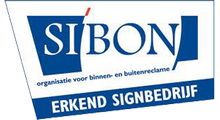Bc Tenancy Agreement Addendum Form
If you are a landlord or a tenant in British Columbia, you need a tenancy agreement that outlines the terms and conditions of your rental arrangement. However, there may be situations where you need to modify or add specific clauses to your tenancy agreement. This is where the BC tenancy agreement addendum form comes in.
What is a BC Tenancy Agreement Addendum Form?
A tenancy agreement addendum form is a legal document that allows landlords and tenants in British Columbia to add additional terms and conditions to their tenancy agreement. It is a separate document from the tenancy agreement itself and serves as a supplement to the original agreement.
When to Use a BC Tenancy Agreement Addendum Form?
There are various instances where you may need to use a BC tenancy agreement addendum form. Some of these instances include:
1. Rent Increase: If you need to increase the rent amount during the tenancy period, you can use an addendum form to add this clause to the original tenancy agreement.
2. Pet Policy: If you are a landlord who initially did not allow pets in your rental property but are now open to the possibility, you can use an addendum form to add a pet policy clause to the tenancy agreement.
3. Parking Policy: If the rental property has limited parking spaces and you need to clarify the parking policy, an addendum form can help you outline the rules and responsibilities regarding parking.
4. Utilities: If utilities such as water, heat, or electricity were not included in the original tenancy agreement, you could use an addendum form to include these utilities and outline how the payment and usage are allocated.
How to Use a BC Tenancy Agreement Addendum Form?
Using a BC tenancy agreement addendum form is a simple process. You can obtain the form from the Residential Tenancy Branch (RTB) website or by visiting their office. You and your tenant (or landlord) need to sign the addendum form, and both parties should keep a copy for their records.
Conclusion
A BC tenancy agreement addendum form is a legal document that provides landlords and tenants with the flexibility to add additional terms and conditions to their rental agreement. It is essential to ensure that the addendum form is signed and kept on file to avoid any potential conflicts or misunderstandings in the future. Consult with a legal professional or a qualified property management specialist if you have any questions or concerns regarding your tenancy agreement or the addendum form.

